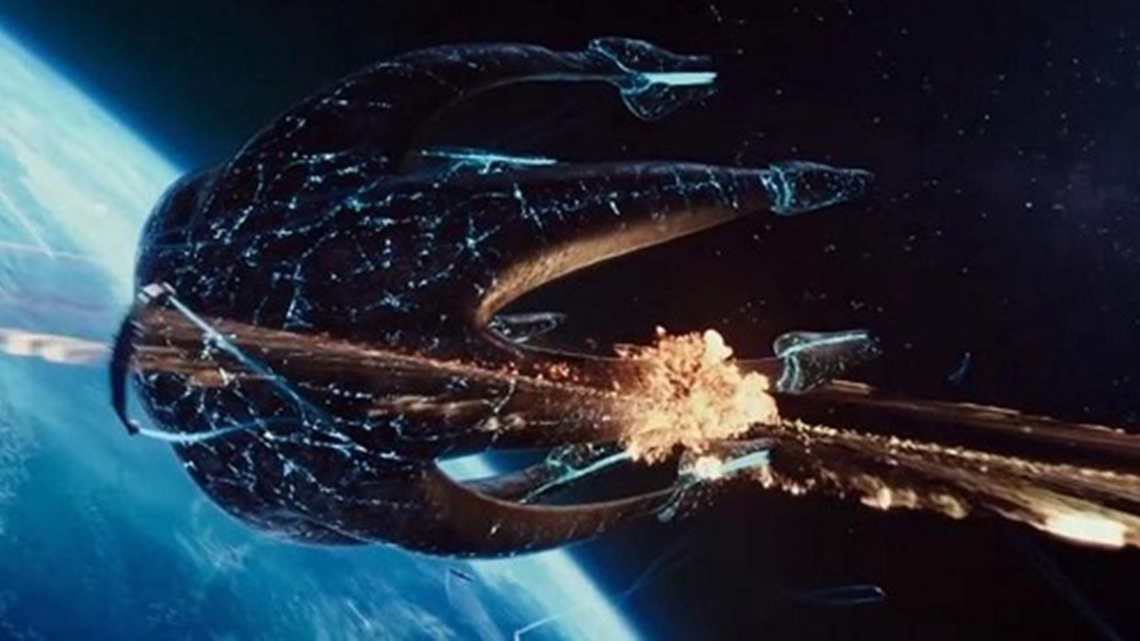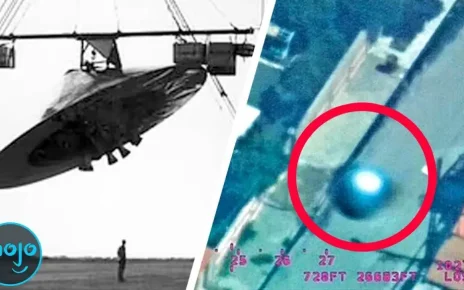
In the 1940s and 1950s, reports of “flying saucers” became an American cultural phenomenon. Sightings of strange objects in the sky became staples of Hollywood’s portrayal of potential threats. Movie posters for films such as 1956’s “Earth vs. Flying Saucers” illustrate these fears.
Connected to ideas about life on the Moon, canals on Mars, and theories about Martian civilizations, flying saucers have come to represent the hopes and fears of the modern world. Are these supposed visitors from other worlds peaceful and benevolent, or would they attack and destroy humanity? The truth is that we don’t have the answers to these questions and everyone has their own opinion, but the truth is that aliens are here.
Alien Presence on Our Planet
A “runaway fireball” that crashed into the water off the coast of Papua New Guinea in 2014 could be an alien probe or an extraterrestrial artifact similar to American interstellar probes like NASA’s “Voyagers,” Harvard professor Dr. Avi Loeb told Fox News. This would be strong evidence of extraterrestrial life on our planet.
Dr. Avi Loeb
The space object crashed into the Bismarck Sea with a percentage of the energy of the 2014 Hiroshima bomb and likely traveled from deep within a planetary system or a star in the thick disk of the Milky Way. It was originally classified as a meteorite but the speed and trajectory of the object were “atypical,” according to a Harvard professor who wrote a paper on the object with his student, Dr. Amir Siraj.
The Space Force’s Space Operations Command officially confirmed its findings to NASA, which were released on April 6, 2022. Loeb has since raised $1.5 million to fund a 10-day “fishing expedition” to recover pieces of the object from the ocean floor to study the wreckage.
“From a scientific perspective, it only takes one object that comes from an alien technological civilization to change the future of humanity,” Loeb told Fox News Digital during an interview in late March. “That’s why we want to know what all the objects are.”
It’s unclear what he and his team will see on their trip to Papua New Guinea, but he said they expect to find fragments on the ocean floor along the original trajectory, with the smallest fragments at the beginning. Loeb predicts they’ll see about a thousand fragments larger than a millimeter, while for a stainless steel composite they expect larger sizes, with dozens of fragments larger than a centimeter. The trip was originally planned for late May, but he told Fox News on Saturday that it has been postponed until the summer.
“We have built the machinery to dig into the ocean floor, which is about a kilometer deep,” Loeb explained. “If the fragments are magnetic, we will use magnets to pick them up and separate them from the mud. If the objects are not magnetic, we have a backup plan.”
Loeb was front and center after the discovery of “Oumuamua,” a long, cigar-shaped object that passed close to Earth in 2017. Before the discovery of the object that crashed in Papua New Guinea, “Oumuamua” was considered the first interstellar object, and Loeb believed it to be an artificial light sail sent from another civilization. He argued his theory in a scientific paper, which became a controversial version of the discovery.

During Loeb’s Fox News interview, which came shortly after the Chinese spy balloon was shot down along with three other unknown aerial objects over the course of eight days, he pressed the government to declassify the raw data or share information with the community if more discoveries like these two interstellar objects are made.
“The sky is not classified,” Loeb went on to explain. “Only the censors that the government is using are classified, so the government does not publish the highest quality data. “As far as we (the scientific community) are concerned, if we find man-made objects, we are happy to turn the data over to the government because it is of little interest to us.”
On the other hand, he believes the government is not “particularly interested” in space objects or meteorites, and that it could be a mutually beneficial arrangement that would allow scientists to make more discoveries like ‘Oumuamua’ or the Papua New Guinea object. Loeb referred to a January Department of Defense report that classified 366 UFO reports since March 2020. The report classified 26 cases as drones or drones, 163 cases as balloons or “balloon-like entities,” and six reports could be attributed to birds, debris such as plastic bags, or weather events. But about half of the new cases could not be explained, and appeared to demonstrate unusual flight characteristics or performance capabilities and require further analysis.
“But an encounter with superior extraterrestrial technology would offer humanity the opportunity to gain new scientific knowledge that goes beyond what we have learned in the past century. It would also provide us with a glimpse into our own technological future offering a quantum leap forward if we are wise enough to import its groundbreaking content into our terrestrial life,” Loeb concludes.
Once again Professor Loeb speaks out about the extraterrestrial presence on our planet. And perhaps we should listen to him given his resume and academic record.
What do you think about the alien presence on our planet? Do you agree with Professor Loeb?






